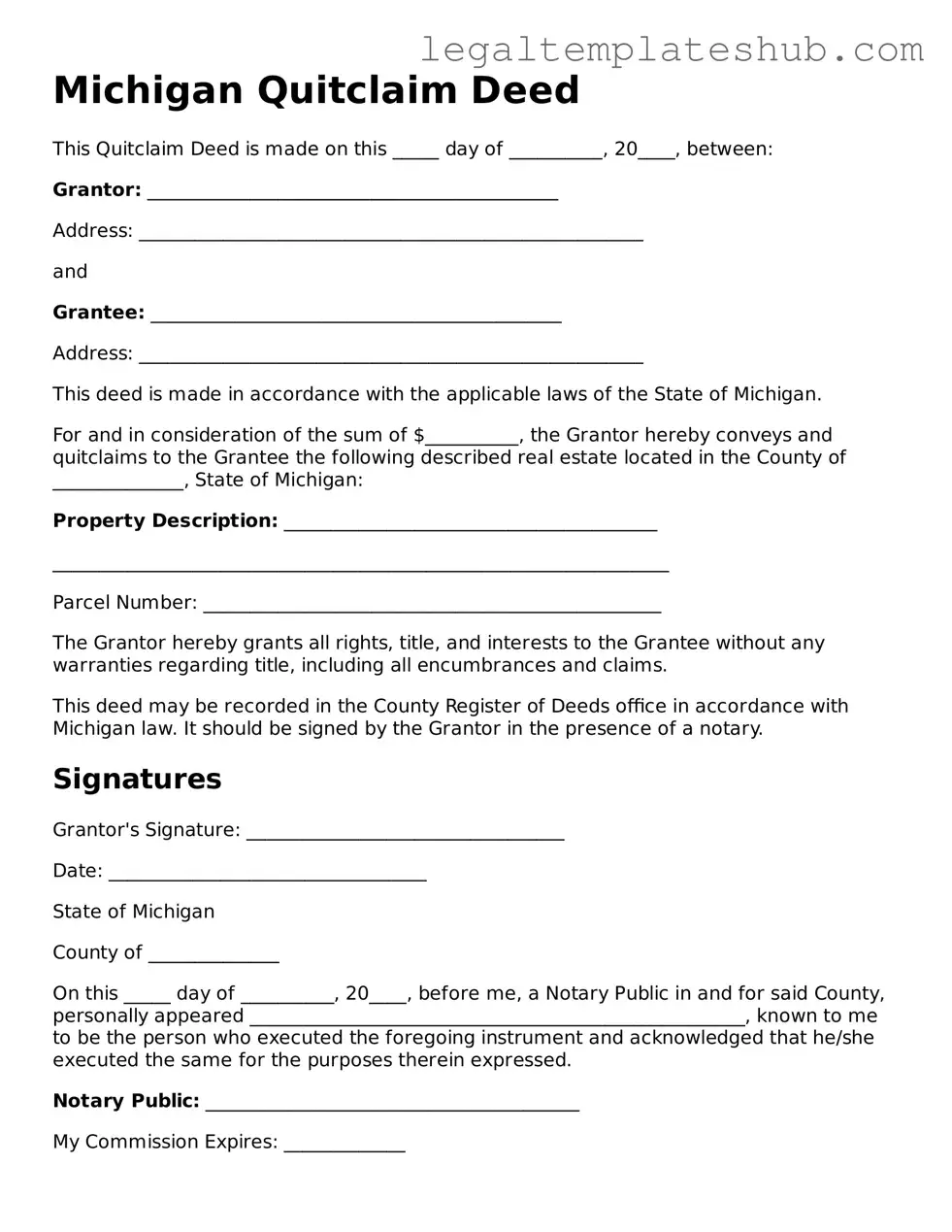Printable Quitclaim Deed Document for Michigan
A Michigan Quitclaim Deed is a legal document used to transfer ownership of real estate from one party to another without any warranties. This type of deed is often utilized in situations where the parties know each other, such as family transfers or between friends. To facilitate the transfer process, consider filling out the form by clicking the button below.
Access Editor
